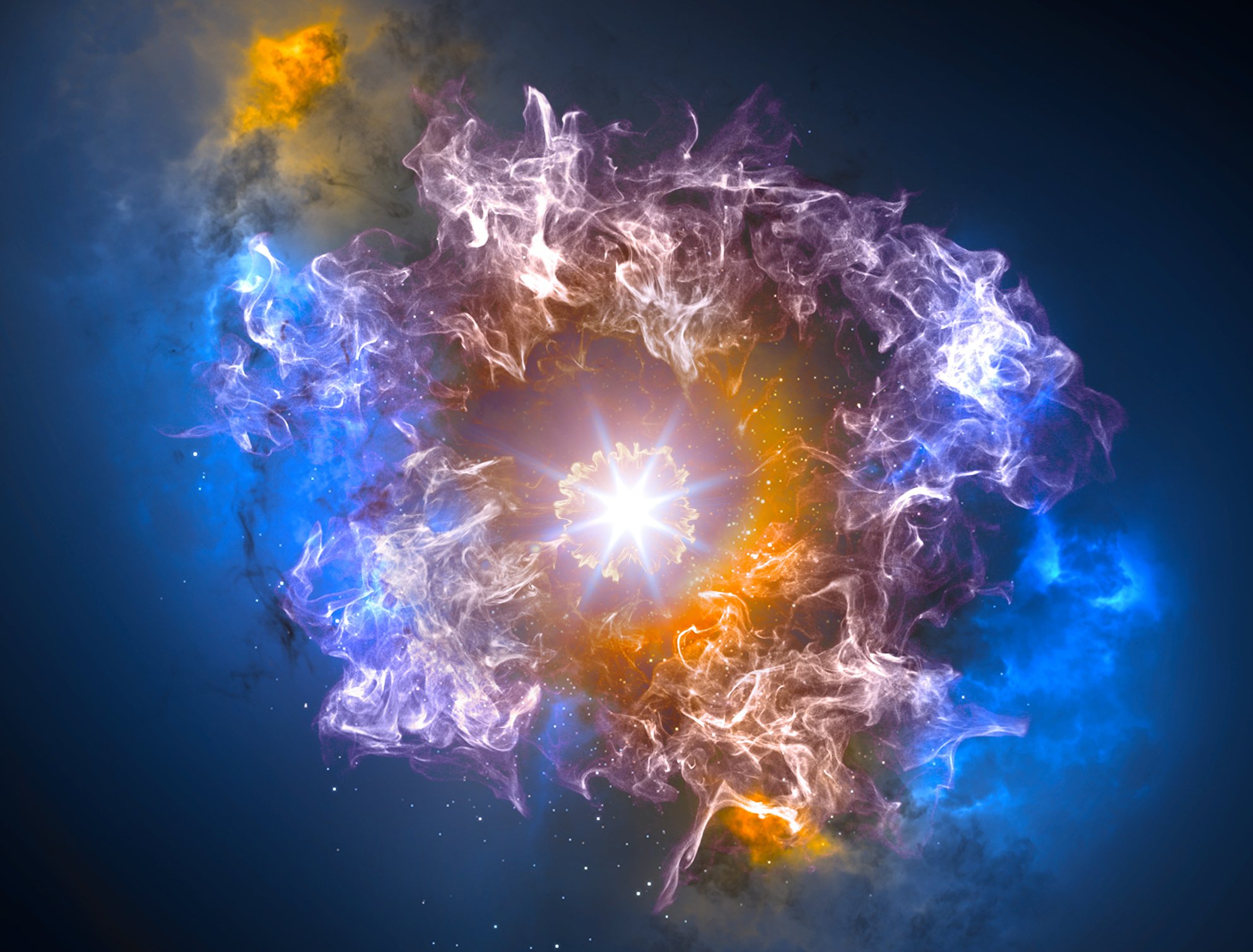The end of planet Earth is certain: Scientists estimate that the Sun will enter the red giant phase in about 5 billion years. This is enough to end the life of all living things in existence, but eventually the Sun will also swallow the Earth during this period, ending everything we know.
The scenario mentioned is extremely sad for the world population. but the universe will continue to exist. Science estimates that the existence of everything began with the Big Bang approximately 13.8 billion years ago, and that the universe went through many radical phase transitions, evolving into what we know today.
These transitions are responsible for the development of the four fundamental forces of nature: gravitational, electromagnetic, strong nuclear, and weak nuclear. So will the universe have an end?
The False Vacuum Breakdown theory suggests that the universe is in a state that is not fully stable; It would be in a state known as a ‘false vacuum’. In simpler words, the universe would not be completely infinite and could meet a tragic end that would bring about the end of all celestial bodies and everything within them.
“It is believed that vacuum decay played a central role in creating spaceTime and matter in the Big Bang, but so far there has been no experimental testing. In particle physics, the vacuum decay of the Higgs boson would change the laws of physics and create what has been described as the ‘ultimate ecological disaster’,” said Ian Moss, professor of Theoretical Cosmology in the university’s School of Mathematics, Statistics and Physics, from Newcastle, in a paper published in the journal Nature Physics.
We gathered information from astronomers and other experts in the field to further explain the pseudovacuum decay theory.
Cosmic apocalypse and false Void Decay theory
The stability of the universe is related to the transitions it undergoes over time. For example, a transition can be shown where water boils and turns into a gaseous liquid. — if you cool it enough, the liquid solidifies and turns into ice. In the case of the cosmos, transitions relate to quantum fields or the building blocks of life.
It is the forces of these fields that communicate with physics that govern our existence based on the fundamental forces of the universe. Gravity, electromagnetism, the strong nuclear force, and the weak nuclear force were not always completely separate; In the early universe, they were all together, and as the universe expanded and cooled, these forces underwent transitions that separated them one by one.
Scientists point out that the last major phase of the universe occurred during the formation of elementary photon particles and W and Z bosons, when a transition occurred and the electromagnetic force separated from the weak nuclear force.
Since then, the universe has remained stable and has not undergone any phase transitions. From here, The fundamental forces of nature shaped the universe we know today, filled with planets, stars, and moons, among other celestial bodies..
“Quantum field theory and the extension of quantum many-body systems have attracted significant attention in the context of statistical physics, protein folding, and cosmology, where thermal and quantum fluctuations are expected to trigger the metastable state transition (false vacuum) into the ground study through probabilistic nucleation of spatially localized bubbles situation (real emptiness),” he explains.
It is not that easy to make measurements to understand the stability of the universe, but there is a way: from the mass of the Higgs boson. Quantum physics explains that the greater the mass of a particle, the more unstable it is and eventually breaks down into lighter particles. So if the Higgs turns out to have more mass than expected, that could mean the universe isn’t as stable as it seems.
Uncertain future and instability of the universe
After performing the measurements, the researchers discovered that the Higgs may be in a state called “metastable”; This means that it will remain stable for a while but may break down in certain situations.
In this scenario, something wrong happening to the Higgs, such as a small jolt in the wrong direction, would be enough to start this phase transition process. With the Higgs transition, physics as we know it would change completely and life would end within seconds. In any case, it is important to remember that the Higgs is classified as stable, so this is just a hypothesis.
False vacuum decay theory is the idea that the universe may be in a metastable state, called a “pseudovacuum.” Well, The vacuum of the universe would not be fully stabilized, and if the next phase transition occurred, this would result in a ‘vacuum bubble’ that would expand at the speed of light and destroy everything.
In a recent study, an international team of scientists conducted an experiment with a supercooled gas below absolute zero to understand the theory of pseudovacuum decay.
The researchers noticed that bubbles began to appear as the vacuum dropped; For this reason, They believe that this phenomenon played an important role in the formation of space, time and matter during the Big Bang. The study’s authors concluded that more research is needed to learn more about the topic.
Did you like the content? Always stay up to date with the latest work in physics at TecMundo. If you want, take the opportunity to learn what 3 myths you need to put aside about the Big Bang.
Source: Tec Mundo
I’m Blaine Morgan, an experienced journalist and writer with over 8 years of experience in the tech industry. My expertise lies in writing about technology news and trends, covering everything from cutting-edge gadgets to emerging software developments. I’ve written for several leading publications including Gadget Onus where I am an author.













